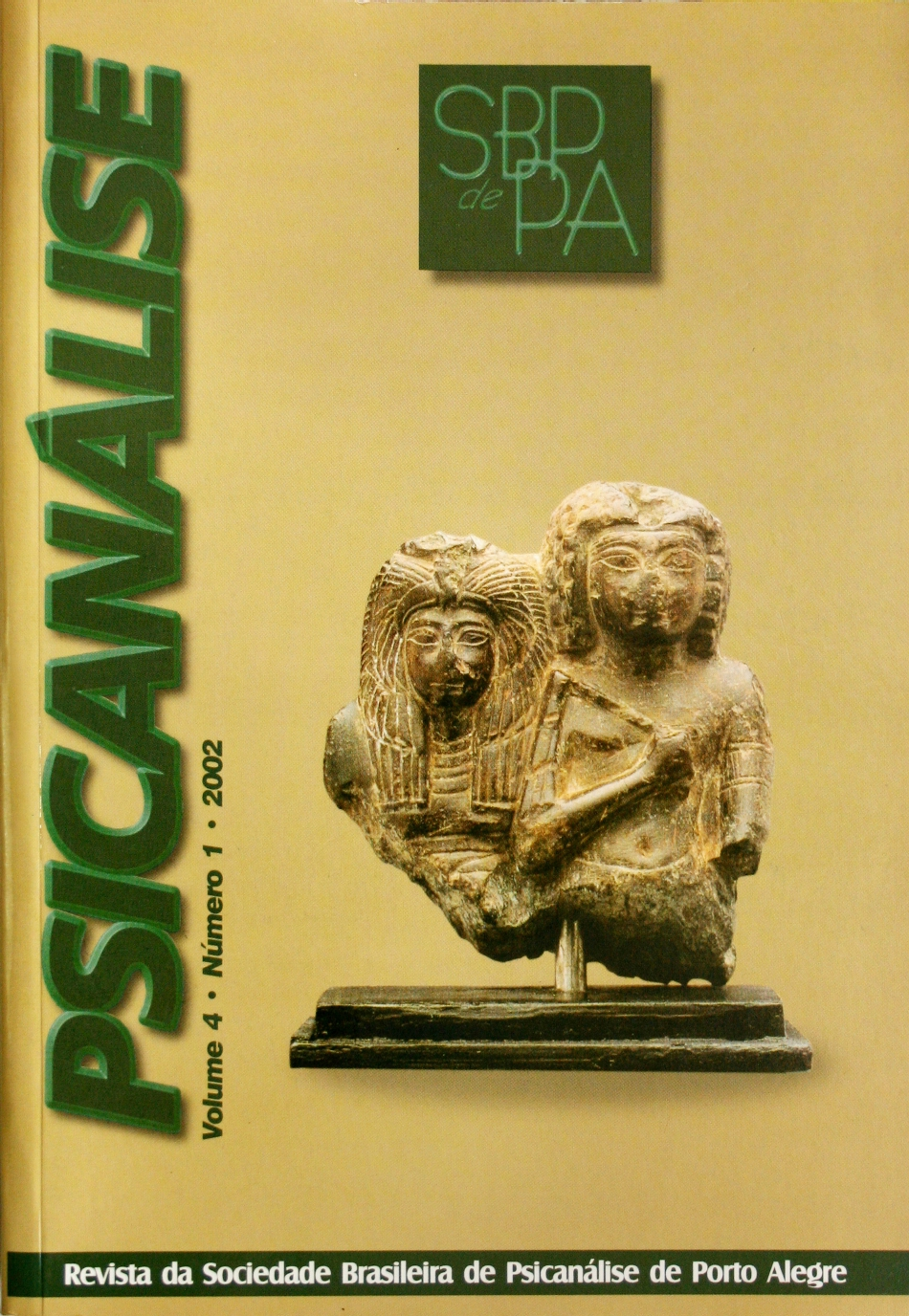A grade edípica
anotações teórico-clínicas sobre configurações edípicas à luz de princípios ético-estéticos de observação
DOI:
https://doi.org/10.60106/rsbppa.v4i1.74Keywords:
Oedipal Grid, Myth of Oedipus, Analytical intuition, Ethical-aesthetic principle, Analytical function of the personalityAbstract
The author takes as his starting point the systematization of an Oedipal Grid, suggested by Bion in Learning from Experience (1962) and tries to show the importance for the analyst to take an incessant dialogue-mentioned in Cogitations (1992) – with the myth of Oedipus, writing down his/her associations in relation to it, rather than occupying taking direct notes regarding the patients. The procedure, being very flexible, can be used for other myths, that can be compared. The author points out the advantages of such inner dialogue, because in stimulating and using producing imagination it promotes analytical intuition, developing, consequently, the analytical language, and extending the selected facts picked-up by the analytical function of the personality. The author gives examples of his free associations on the elements of the myth of Oedipus aroused by following the horizontal axis of this limited Grid, instead of using the usual structures of psychiatric inspiration, and supplies some fragments of his clinical experience without the necessity of identifying patients. From Bion’s ideas vertex this path installs a difference, because it can only be used by the analyst who uses the unconscious to interpret a state of conscious mind, and not the contrary. At the same time, the author suggests that the analyst who uses such a method needs to support his interpretations in ethical-aesthetic principles of observation. The author searchs for a clarification of what these principles mean, describing them from their origin in science, and mentioning that in psychoanalysis their use elapses after the perception of the unconscious. The central question involved in these formulations was supplied by Freud, when working through a scientific basis of observation, he designated in Two Principles of Mental Functioning, that art is able to reconcile the two principles.
Downloads
References
BION, W.R. (1962). Learning from experience. London: Heinemann.
______. (1963). Elements of psychoanalysis. London: Heinemann.
______. (1970). Attention and interpretation. London: Tavistock.
______. (2000). Cogitações. Tradução Esther Hadassa Sandler e Paulo César Sandler: Rio de Janeiro: Imago.
CHEBABI, W. Comunicação pessoal.
CHUSTER, A. (1989). Um resgate da originalidade: as questões essenciais da psicanálise em W.R. Bion. Rio de Janeiro: Degrau Cultural.
______. (1996). Diálogos psicanalíticos sobre W. R. Bion. Rio de Janeiro: Tipo&Grafia.
______. (1997) The myth of Satan: an aesthectic view of Bion’s concept of transformation in O. Trabalho apresentado na Centennial Conference on the Work of Bion. Turim, Itália.
______. (1998). Bion cria de fato uma nova psicanálise? Revista de Psicanálise da SPPA, v.5, n.3.
______. (1999). W. R. Bion – Novas Leituras: a psicanálise dos modelos científicos aos princípios ético-estéticos. Rio de Janeiro, Co. de Freud.
______. (2000b). Entre Freud e Bion: os princípios ético-estéticos de observação. Revista de Psicanálise da SPPA, v.7, n.2, set.
FREUD, S. (1895). Projeto de uma Psicologia. Rio de Janeiro: Imago.
______. (1911). Formulações sobre os dois princípios do funcionamento mental. E.S.B. Rio de Janeiro: Imago.
MELTZER, D. (1986). Studies in extended metapsychology: clinical applications of Bion’s ideas. Perthshire: Clunie Press.
Bibliografia consultada
ABADI, M. (1960). Renacimiento de Édipo: Buenos Aires, Nova.
BION, W.R. (1965). Transformations: change from learning to growth. London: Heinemann.
______. (1971). The grid and caesura: Rio de Janeiro, Imago.
______. (1972). Bion’s Brazilian Lectures II. Rio de Janeiro: Imago.
______. (1987). Clinical seminars and four papers. Abingdon: Fleetwood.
______. (1997). Taming wild thoughts. London: Karnac Books.
BOLLAS, C. (1992). Forças do destino: psicanálise e idioma humano. Rio de Janeiro: Imago.
BLÉANDONU, G. (1996) Bion: vida e obra. Rio de Janeiro: Imago.
CASTORIADIS, C. (1989) As encruzilhadas do labirinto I. Rio de Janeiro: Paz e Terra.
CHUSTER, A. (2000). Aproveitando ao máximo a sessão analítica. Trabalho apresentado ao Grupo de Estudos Psicanalíticos Rio-3.
______. (2000). Estruturas edípicas e pré-edípicas em Bion. Trabalho apresentado na IX Jornada de Psicanálise da Sociedade Psicanalítica de Campinas, SP.
______. (2000). Psicanálise e Sociedade: a contribuição de Bion. Trabalho apresentado no XXIII Congresso da FEPAL.
CONTE, J. (org.) (1997). Seminários com Arnaldo Chuster: uma teoria do pensar e aprender da experiência. São Paulo: Escuta.
______. (org.) (1999) Seminários com Arnaldo Chuster: os elementos da psicanálise. São Paulo: Escuta.
FRANÇA, M.O. (org.) (1997). Meltzer em São Paulo. São Paulo; Casa do Psicólogo.
GREEN, A. (1983). El trabajo de lo negativo. Buenos Aires: Amorrortu.
SANDLER, P.C. (1997). A apreensão da realidade psíquica. Rio de Janeiro: Imago. v.1.
WALDROP, M. (1992). Complexity. New York: Simon & Schuster.
Downloads
Published
How to Cite
Issue
Section
License
I attribute the copyrights that belong to me, on this work, to SBPdePA, which may use and publish it by the means it deems appropriate, including on the Internet or in any other computer processing.
















